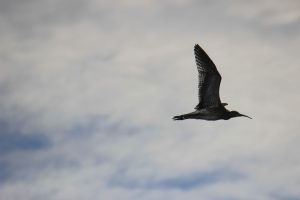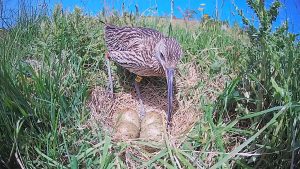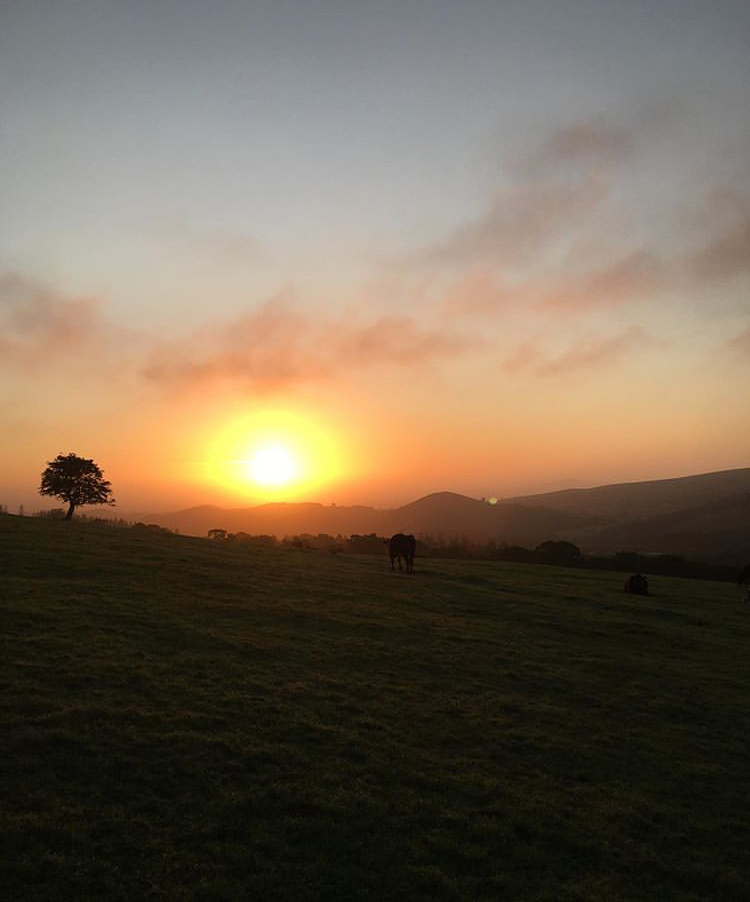Curlew Country Manager, Amanda Perkins talks about plans for the 2021 Curlew Season

After a year of patience, and perhaps some impatience, we are excited to be back in action for the Curlew nesting season. Spring is on its way. The first Curlew sounds and sights are being reported by our farming partners as the birds return inland from their winter coastal, estuarine and wetland roosts.
Our ornithologist Tony has started his field work. He is out and about trying to read the colour rings of migratory birds. Ringing remains an essential source of long-term data collection for birds. Curlew Country birds are colour-ringed – orange ring on the left leg and yellow on the right leg. This is starting to build up a picture of the behaviour of the significant population of Curlews that breed on the Welsh and Shropshire borders. We have discovered changes in territories and in pairings. We have also been re-assured to notice other Curlews making ‘text-book’ returns to almost the same nest site year after year.
In 2017, Curlew Country successfully applied for the first Natural England licence to incubate eggs and rear birds, then release them back into the natural environment when fully fledged. This process is called headstarting. It is an intervention not undertaken lightly but as a measure to prevent a population from becoming extinct whilst other support essential to natural nesting is found. It is thought that Curlews, like other waders, will return to the area in which their parents habitually return to breed each year, but we need to know more about this.
Two years ago, Tony took his mum to see some of our Curlews. There are delightful photos of an elderly lady, suffering from dementia but enjoying flower rich grassland buzzing with Spring life. Tony searching for Curlews through a telescope, had a heartbeat skipping moment when he saw one of the six Curlews reared by Curlew Country in 2017 with the voluntary help of Tony’s Aunt Jean, his mum’s sister. The chick, now adult, had returned to a favoured Curlew breeding area close to its rearing and release sites and was making its first attempt at breeding itself.
In the 2021 season, one of our most important tasks is to discover if any of our 60 reared chicks return to the landscape to attempt to breed themselves and how they will fare if they do. We know that headstarted Curlews in other areas of Europe have returned to the places where they were bred and reared and also that experience of other wader headstarting shows similar patterns. We also know from research that during the two years chicks mature to young adults at their winter roosts and during migration, that up to 50% can perish. As we wait expectantly, we have experienced a milder spell of weather which is often a signal for Curlews to start migrating. This was then followed by a cold windy period which can cause migratory challenges and freeze inland ground preventing foraging for the energy needed to fuel migratory flights.
The whole team is longing to see some of the precious chicks tended as eggs then nurtured carefully, through spring and early summer over several years, return as healthy adults able to ensure our important hotspot population survives and thrives – the theme of 2021.
Amber the Project Officer will continue our head-starting work. She will be leading the team of head-starters and we will be relying on our fantastic and growing team of volunteers to help us. JP and Tim will as usual provide calm, hard graft to ensure that all gaps are filled and bases covered and keep Tony, Amber and me, from rushing around so fast that we do not accidentally take flight with our beautiful bubbling birds.
 Oh yes and of course Curlew Cam will be back.
Oh yes and of course Curlew Cam will be back.
We will talk more about other plans as the season progresses, so please do keep up to date with the website and social media to follow our work.
We are so grateful to all the wonderful people who have helped us raise enough funding to enable us to continue our essential Curlew Recovery work for another season. We are grateful as well for the support of our farming and land managing partners, the local community and the volunteers who have and will be helping us to carry out our work.
If you would like to get involved click here.
If you would like to help us continue our essential work this curlew season, you can donate below:
[paypal_donation_button]

